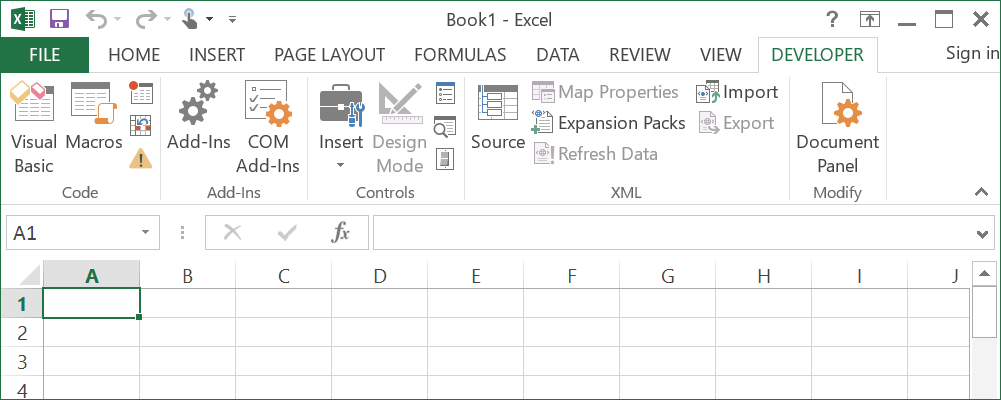
- #Add developer tab excel how to
- #Add developer tab excel for mac osx
- #Add developer tab excel mac os
- #Add developer tab excel code
#Add developer tab excel for mac osx
Microsoft Office for MAC OSX has ships tools for Macro recording and development.
#Add developer tab excel how to
The tab is turned off by default in Microsoft Office, but you can learn how to set it up in a breeze.įollow along as we setup the macro VBA development in Excel, Word, Outlook and other Office apps: The best way to access the VBA developer environment, is the so-called Developer tab. Outlook and PowerPoint do not offer the macro recorder so you’ll need to develop some VBA chops if you want to automate tasks in your presentation or a mail message. Getting started with Excel Macros and Word VBA development is relatively simple as both ship a built-in Macro recorder that allows you to capture a specific sequence of actions and re-use them later on. Recording macros might be good for starters, but most probably you will be using Visual Basic for Applications (VBA) to write your custom Macros. Depending on which application you want to automate, you can either record or write your Macro. Am i missing out something? Is there any specific setting or configuration to make the Developer tab visible?Īs we explained in the past, the simplest way to automate tasks in Microsoft Office applications (Excel, Word, PowerPoint, Outlook, Visio, Access and Outlook) is using Macros. For some reason, i don’t see that menu item in the Ribbon. I figured out that some of the examples point out to the developer menu in Microsoft Excel, Word and Outlook.
#Add developer tab excel code
I am trying to figure out macro development from going through code examples in your website.

#Add developer tab excel mac os
Inside the Excel Options dialog, you clicked the OK button.Applicable to: Office 365, 2019, 2016, 2013 Windows 7, 8 & 10 and mac OS operating systems. Inside the Excel Options dialog from the Expression Elements Tree list from the Icon List list from the customizeRibbonNewTabNewGroupTreeListOptionsTreeList list, you selected CreateQ1Chart.

Inside the Rename dialog, you typed Macros in the Display name: input, clicked the OK button. Inside the Excel Options dialog, you clicked the Rename. Inside the Excel Options dialog from the Expression Elements Tree list from the Icon List list, you collapsed Macros (Custom), double-clicked the New Group (Custom) list item. Inside the Rename dialog, you typed Favorites in the Display name: input, clicked the OK button. Inside the Excel Options dialog from the Expression Elements Tree list, you selected Favorites (Custom). Inside the Excel Options dialog, you clicked the Add > button.

Inside the Excel Options dialog from the Macros Options list, you selected CreateQ1Chart. Inside the Excel Options dialog in the Macros drop-down, you selected Macros. Inside the Excel Options dialog from the Expression Elements Tree list from the Icon List list, you selected Macros (Custom).


 0 kommentar(er)
0 kommentar(er)
